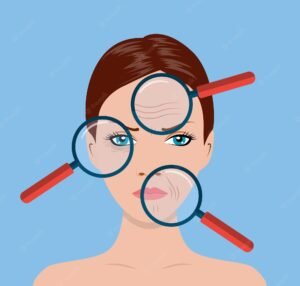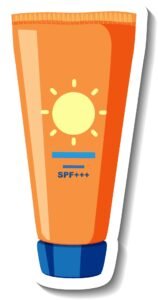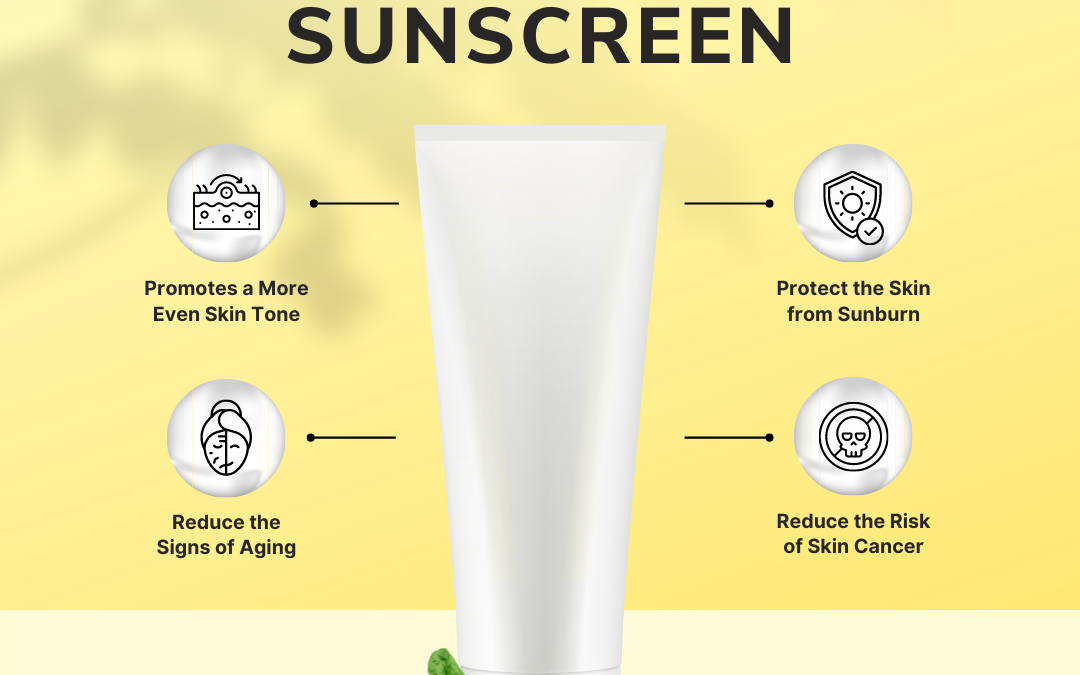Why is sunscreen important?
A lack of protection from the Sun’s rays has overwhelmingly dire consequences. UV Radiation, whether from the Sun or from artificial sources, is the main cause of the development of skin cancer, and tripling your risk of melanoma skin cancer only requires getting sunburnt just once every two years [1]
It is difficult to protect ourselves fully with protective clothing, especially when hot weather demands we wear fewer layers to stay cool. Therefore, sunscreen should be an important part of our regimen. Understanding how UV radiation effects our skin magnifies the importance of an effective sunscreen.
UV Radiation
UVA – These deeply penetrate the skin to cause indirect DNA damage within skin cells, trigging the first line of defence which includes the production of melanin. UVA also oxidises melanin, causing it to become darker, and helping the skin tan even more. However, melanin and other UV-absorbing pigments can’t absorb all the UV radiation, meaning some UV radiation reaches the DNA [2].
UVB – These damage the skin’s outer layers, causing sunburn and potentially causing blisters. Your DNA absorbs the UVB radiation and is subsequently damaged directly by it. This not only has been shown to have adverse effects on humans, but also in animals, plants and bacteria! [2] UVB also helps tan the skin by increasing the production of melanin [3].
UVC – Although these would be the most dangerous for your skin, they cannot penetrate through the ozone layer. They have the shortest wavelength.
UVA

- UVA is for Ageing
- Indirectly damages DNA
- Penetrates to the skin’s inner layers
- Longer wavelength
UVB

- UVB is for BURNING
- Directly damages DNA
- Damages the skin’s outer layers
- Shorter wavelength
- Protected from by using SPF
SPF means Sun Protection Factor– this is how many times longer you can stay in the Sun before burning, compared to if you had no protection. Lasting 10 minutes in the sun before burning, and applying SPF 30 sunscreen=300 minutes= 5 hours before burning. SPF only indicates protection from UVB radiation.
UVA and UVB
- Tan the skin
- Damage DNA
- Penetrate through the ozone layer, unlike UVC
Sunscreens

Modern day sunscreens have to prevent UVA and UVB radiation from damaging the skin. However, the ingredients that sunscreens contain frequently differ. This typically divides sunscreens into two categories.
Mineral Sunscreens
Mineral/Physical Sunscreens use ingredients such as Zinc Oxide and Titanium Dioxide, which sit on the surface of the skin and act instantly as a physical barrier that reflects the UV rays of the Sun. Modern Sunscreens frequently use Nanoparticle versions of these minerals in order to make them easier to apply, and so they don’t leave a white opaque film on the body. They have also been shown to give better UV protection than Non-Nano versions [9].
Are Nanoparticle sunscreens harmful?
A review of the use of Nanoparticle Zinc Oxide and Titanium Dioxide in Sunscreens has been conducted by the Therapeutic Goods Administration (TGA), who surmised that neither the Zinc Oxide or Titanium Dioxide nanoparticles in sunscreens are likely to cause harm, based on the fact that they do not penetrate/minimally penetrate the outer layers or the underlying layers of the skin. Therefore, it is very unlikely that they could be absorbed into the bloodstream [8].
Pros:
- Safer in the long-term
- Less likely to cause irritation: better for sensitive skin
- No waiting time to be effective
- Some new mineral sunscreens won’t leave a white cast on your skin
Cons:
- More difficult/takes longer to apply
- Have to be applied more frequently
- Frequently looks more white and opaque (Non-nano)
- Can block pores. Often will include anti-acne ingredients to compensate (e.g. Niacinimide, Lactic acid)
What’s in your Mineral Sunscreens?
Active ingredients:
- Zinc Oxide
Is Broad-spectrum- protects against UVA, including UVA 1 (compensating for Titanium Dioxide’s lack of coverage) and UVB although not as much as Titanium Dioxide does.
- Titanium Dioxide
Is Broad-spectrum- protects against UVA 2 and UVB, but not against UVA 1.
Inactive ingredients
- Shea Butter – The fat of the African Shea tree. Due to being one of the best moisturisers around, as well as adding 6-10 SPF to your sunscreen, Shea butter is a popular sunscreen ingredient.
- Aloe Vera – While the gel from inside the Aloe Vera plant is best for soothing burns, it also helps protect from UV damage bymaintaining the membranes of your cells and its contents [10].
- Jojoba Oil – An oil that moisturises and is anti-inflammatory, Contains myristic acid, which has an SPF of 4.
- Sunflower Oil – Sunflower oil contains vitamin E which protects the skin from free radicals, and also absorbs some UVB radiation.
Chemical Sunscreens
Chemical Sunscreens use chemical ingredients/filters such as Oxybenzone, Octinoxate, Avobenzone and Octocrylenethat work by absorbing the UV radiation from the sun and converting into safer radiation.
Are these chemicals harmful?
In recent years, some studies have looked into these chemical ingredients, and their findings have produced some concern. One study on 24 participants showed that these ingredients were absorbed into the bloodstream to produce concentrations much higher than the threshold established by the FDA [4].
Oxybenzone has been shown to disrupt hormones in mice and rats, altering the size and function of mammary glands in mice [5] and in the uteruses of rats [6]. However, the dose of oxybenzone the rats were exposed to is even higher than the dose a person who applies sunscreen daily for multiple decades could give themselves. Furthermore, we can’t confidently say that these results would apply to humans.
A study in human couples who were trying to conceive did however show that higher concentrations of Benzophenone UV filters diminished the concentration and movement of sperm in the men, with Benzophenone-2 lowering the fecundity of males by 31%. These associations were not observed with Oxybenzone (Benzophenone-3) [7}.
However, chemical UV filters such as Octocrylene degrade into benzophenone, leaving cause for concern about these chemical ingredients.
Pros
- Protect the skin for longer
- Easier and quicker to apply
- Doesn’t leave a white cast on the skin
Cons
- Takes 20 to 30 minutes to begin to be effective
- Can cause allergic reactions, especially in people with sensitive skin
- Damage the marine environment (e.g. Oxybenzone, Octocrylene, Octinoxate) [11] [12]
- Are absorbed into the bloodstream, and may be harmful.
What’s in your Chemical Sunscreens?
These ingredients have been shown to disrupt hormones, poison coral reefs and absorb into your bloodstream at high concentrations. Some sunscreens may say they are Reef Friendly, but still include some of these ingredients. Always check the label for these ingredients
Octocrylene – Is Broad-spectrum- protects against UVB and partly UVA 2, while providing some water resistance.
Oxybenzone –Is Broad-spectrum- protects against UVA and UVB radiation, and helps stabilise other ingredients.
Octinoxate –Only protects against UVB radiation.
Avobenzone – Protects very well against UVA radiation, but breaks down easily, so frequent reapplication of sunscreen is needed.
New-wave ingredients – a better option?
Bemotrinizol – Is Broad-spectrum- protects against UVA and UVB radiation. Approved in Europe and Australasia, but not yet by the US. However, it considered safe as it has not shown to disrupt hormones, and doesn’t absorb into the skin as much as others.
DHHB – Protects against UVA radiation, it also has not yet been approved in the US, but is considered to have excellent safety for the skin and for the environment.
Octyltriazone –Protects against UVB radiation. Currently considered safe as it doesn’t absorb through the skin or disrupt hormones.
Effectiveness
When it comes to safety, Mineral Sunscreens comes out on top. But are they as effective as Chemical Sunscreens?
First of all, it’s important that your sunscreen protects against both UVA and UVB, which is referred to as being broad-spectrum. Mineral Sunscreens that contain both Zinc Oxide and Titanium Dioxide will protect well against both UVA and UVB.
Whether these mineral ingredients are as effective as chemical ingredients is a contentious debate. Murad states that both are equally as effective when used ‘daily, consistently and properly’. In order to make it to the market, sunscreens have to be tested and should absolutely be effective.
Despite this, Consumer Reports has carried out testing for UVA and UVB protection by chemical and mineral sunscreens, and judged that chemical sunscreens perform better, generally due to better UVA protection, regardless of if it contained both Zinc Oxide and Titanium Dioxide. This was in contrast to the Person Care Products Council which found no difference in effectiveness between mineral and chemical ingredients.
Written by Owen Drew


Recent Comments